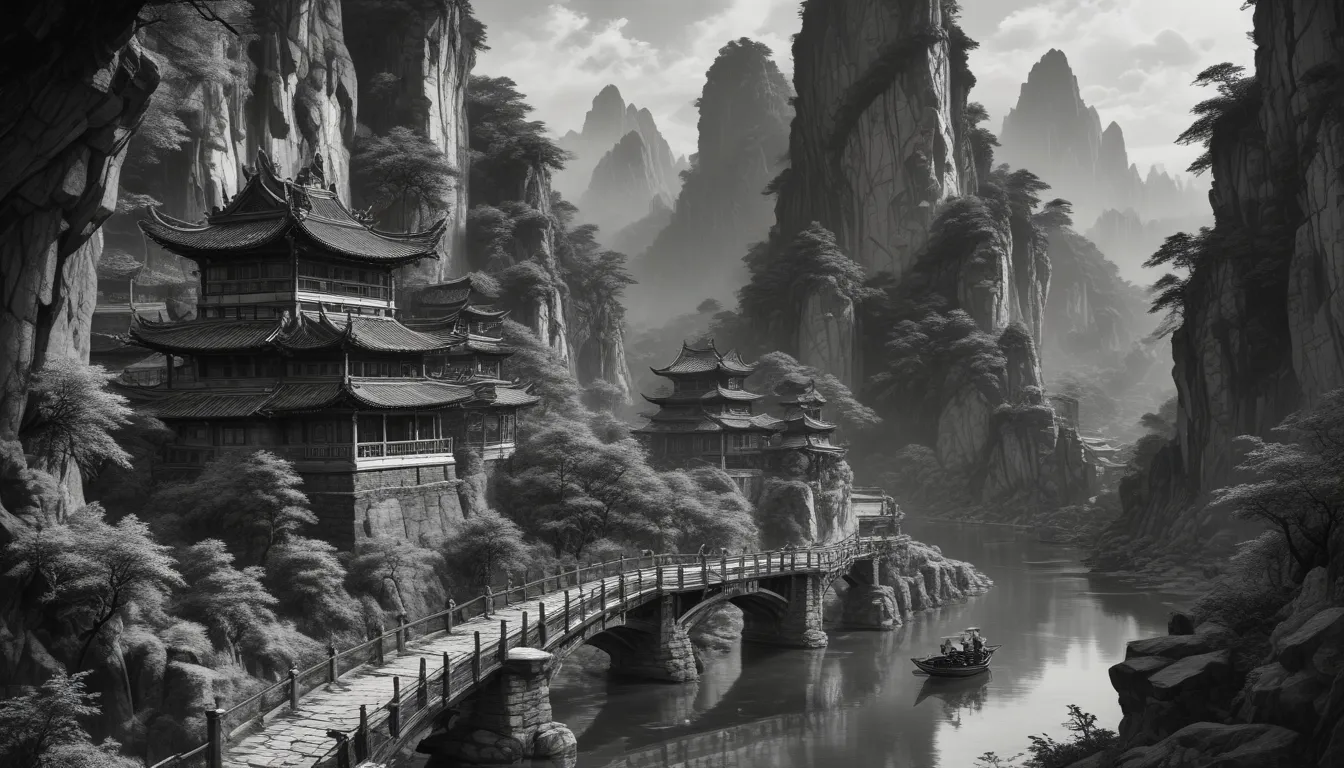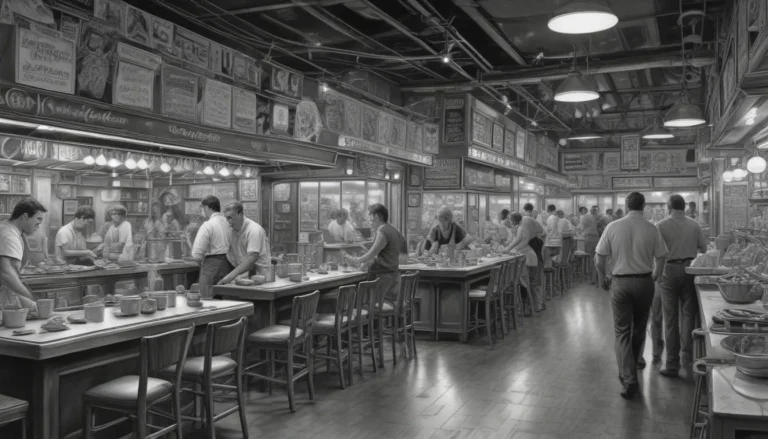The images in our articles are for illustrative purposes only and may not exactly match the content. They are intended to capture your interest and complement the text, not to replace it.
Welcome to Zhangjiagang, a charming city nestled in the Jiangsu province of China, waiting to be explored. With its rich history, picturesque landscapes, and vibrant culture, Zhangjiagang offers a unique experience for travelers seeking something truly special. In this article, we will delve into 30 fascinating facts about Zhangjiagang, shedding light on its historical significance, natural attractions, local cuisine, and more. Whether you are planning a visit or simply curious about this enchanting city, these facts will give you a glimpse into what makes Zhangjiagang truly remarkable.
Unveiling Zhangjiagang: A Vibrant City in China
Zhangjiagang is a bustling city known for its rich culture, thriving economy, and commitment to sustainability, making it a vibrant and dynamic destination for tourists and residents alike. With a population of over 1.2 million people, Zhangjiagang is a major port city along the Yangtze River, famous for its textile industry, diverse culinary scene, and well-preserved ancient water town.
Exploring the City of Zhangjiagang
- Location: Zhangjiagang is situated in the southeastern part of Jiangsu Province, China, occupying an area of approximately 1,276 square kilometers on the southern bank of the Yangtze River.
- Population: With over 1.2 million residents, Zhangjiagang is a bustling metropolis filled with diverse and vibrant communities.
- Economic Development: Zhangjiagang is known as one of China’s top 100 counties, demonstrating remarkable economic growth and boasting a strong industrial base.
- Port City: As a major port city along the Yangtze River, Zhangjiagang Port serves as a vital transportation hub, facilitating trade and commerce both domestically and internationally.
Cultural Highlights of Zhangjiagang
- Land of Fish and Rice: Zhangjiagang is often referred to as the “Land of Fish and Rice” due to its fertile lands and proximity to water sources ideal for agriculture, particularly rice cultivation and fishing.
- Rich Heritage: The city boasts a rich cultural heritage, with numerous historical sites, temples, and traditional Chinese architecture.
- Textile Industry: Zhangjiagang is famous for its textile industry, producing cotton, silk, and linen fabrics renowned both domestically and internationally.
Vibrancy and Sustainability
- Thriving Economy: The GDP of Zhangjiagang ranks among the highest in China, contributing significantly to the overall development of Jiangsu Province.
- Environmental Initiatives: Known for its commitment to sustainable development, Zhangjiagang implements various measures to reduce pollution and promote eco-friendly practices.
- Tourist Destination: Zhangjiagang is a popular tourist spot offering scenic attractions such as Zhangjiagang Park, Tiancheng Temple, and the Yangtze River waterfront.
Embracing Tradition and Innovation in Zhangjiagang
From its well-developed transportation system to its diverse culinary scene, Zhangjiagang embodies a perfect blend of tradition and modernity, making it an intriguing city to explore.
Transportation and Cuisine
- Transportation: Zhangjiagang has a well-developed transportation network accessible by road, rail, and water, making it convenient for both domestic and international travel.
- Culinary Delights: Food enthusiasts can savor local delicacies such as Zhangjiagang fried rice, braised fish, and stinky tofu, showcasing the city’s diverse culinary scene.
Cultural Events and Education
- Cultural Festivals: The city hosts various cultural events and festivals throughout the year, offering a mix of traditional Chinese celebrations and modern music festivals.
- Education Hub: Home to several universities and educational institutions, Zhangjiagang provides excellent academic opportunities attracting students from across China and beyond.
Free Trade Zone and Tourism
- International Trade: The Zhangjiagang Free Trade Zone promotes international trade and investment, offering companies tax benefits and streamlined customs procedures.
- Tourism and Leisure: With a well-preserved ancient water town, vibrant nightlife, and numerous parks and green spaces, Zhangjiagang offers a range of leisure activities for residents and visitors.
Sustainable Urban Planning and Recreation in Zhangjiagang
Zhangjiagang stands as a model for sustainable urban planning, emphasizing green spaces, walkability, and efficient public transportation systems. From golf clubs to scenic islands, the city offers a diverse range of recreational activities for all to enjoy.
Urban Planning and Attractions
- City Cleanliness: Known for its clean and well-maintained environment, Zhangjiagang’s local government prioritizes cleanliness, ensuring streets and public areas are tidy.
- Community Spirit: Residents of Zhangjiagang are recognized for their warmth, hospitality, and strong sense of community support.
- Attractions: The city boasts must-visit attractions such as the Yangtze River Bridge, Shuangshan Island Scenic Area, and Zhangjiagang International Water World.
Recreation and Entertainment
- Natural Beauty: Residents can enjoy outdoor activities in parks and green spaces like Xiangshan Park and Shuangshan Forest Park, appreciating the city’s natural beauty.
- Nightlife: Zhangjiagang offers a vibrant nightlife with numerous bars, clubs, and karaoke establishments where locals and visitors can enjoy a night out.
Landmarks and Leisure
- Architectural Marvels: The Yangtze River Bridge in Zhangjiagang is an impressive architectural marvel connecting the city to the northern bank of the Yangtze River.
- Chemical Industry: A significant producer of chemicals and petrochemicals, Zhangjiagang contributes significantly to China’s overall chemical production.
Unveiling the Charms of Zhangjiagang
As a city that balances traditional values with modern development, Zhangjiagang presents a captivating blend of history, culture, and industrial prowess. Its commitment to sustainability, vibrant economy, and cultural richness make it a fascinating destination for travelers seeking an authentic Chinese experience.
Vibrant Cityscape and Accommodations
- Community Bond: Zhangjiagang’s strong sense of community fosters warmth, hospitality, and mutual support among residents.
- Silk Embroidery: The city is famed for its exquisite silk embroidery products, reflecting a long-standing tradition of craftsmanship and artistry.
- Museum and Connectivity: The Zhangjiagang Museum showcases the city’s history and culture, while the city’s connectivity to major cities like Shanghai, Suzhou, and Nanjing makes it easily accessible to visitors.
Innovation and Entertainment
- Sustainable Development: Zhangjiagang serves as a model for sustainable urban planning, focusing on green spaces, walkability, and efficient public transportation systems.
- Golf Courses and Water Parks: The Zhangjiagang Yangzi International Golf Club offers stunning course views, while the Zhangjiagang International Water World provides a fun-filled attraction for families.
Planning Your Trip to Zhangjiagang
In conclusion, Zhangjiagang is a captivating city with a rich history, stunning landscapes, and a vibrant culture waiting to be explored. Its economic vitality, commitment to sustainability, and diverse leisure options make it an ideal destination for travelers seeking an authentic Chinese experience. Whether you’re admiring ancient water towns, enjoying the city’s parks and gardens, or sampling local delicacies, Zhangjiagang offers a unique blend of tradition and modernity. Plan your visit to Zhangjiagang today and immerse yourself in the enchanting beauty and warm hospitality of this dynamic city.
FAQs
Q: What is the best time to visit Zhangjiagang?
A: The best time to visit Zhangjiagang is during the spring (March to May) and autumn (September to November) seasons when the weather is pleasant, and the natural sceneries are at their most beautiful.
Q: How can I get to Zhangjiagang?
A: Zhangjiagang is conveniently connected to major cities in China, with easy access by air, train, or bus from nearby cities like Shanghai or Suzhou.
Q: What are some must-visit attractions in Zhangjiagang?
A: Must-visit attractions in Zhangjiagang include ancient water towns like Zhouzhuang, serene parks like Zhangjiagang Park, cultural sites like Jinling Guanyin Temple, and scenic areas like Huaxi Scenic Area.
Q: Is English widely spoken in Zhangjiagang?
A: While English may not be widely spoken among the local population, many hotels, restaurants, and tourist attractions in Zhangjiagang have English-speaking staff to assist visitors.
Q: What is Zhangjiagang famous for?
A: Zhangjiagang is renowned for its stunning natural landscapes, picturesque water towns, textile industry, local cuisine, and commitment to sustainable development.
Q: Are there accommodations options in Zhangjiagang?
A: Yes, there are several accommodation options in Zhangjiagang, ranging from luxury hotels to budget-friendly guesthouses conveniently located near major tourist attractions.
Explore the enchanting beauty and vibrant culture of Zhangjiagang, a city that seamlessly blends tradition with innovation, offering a truly unforgettable experience for all who visit.






